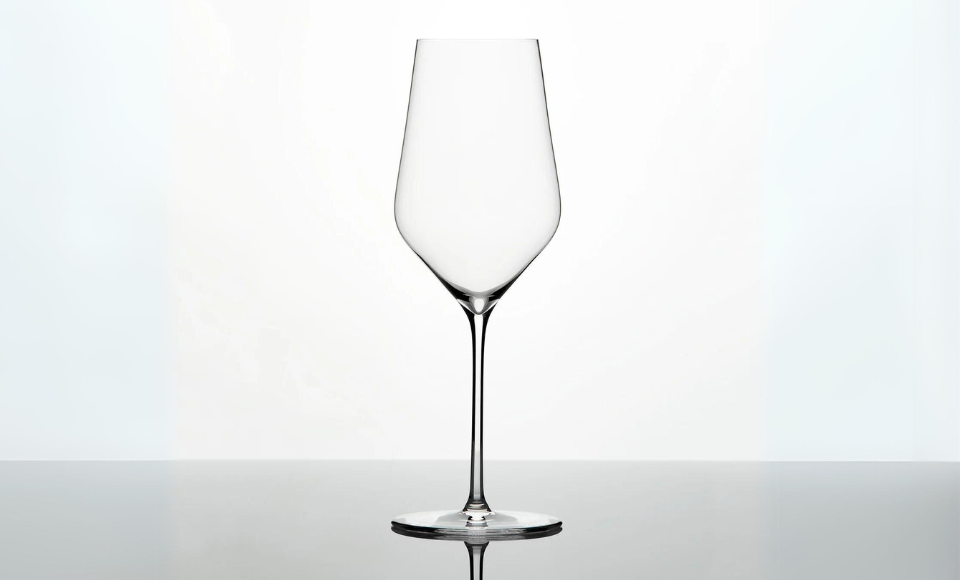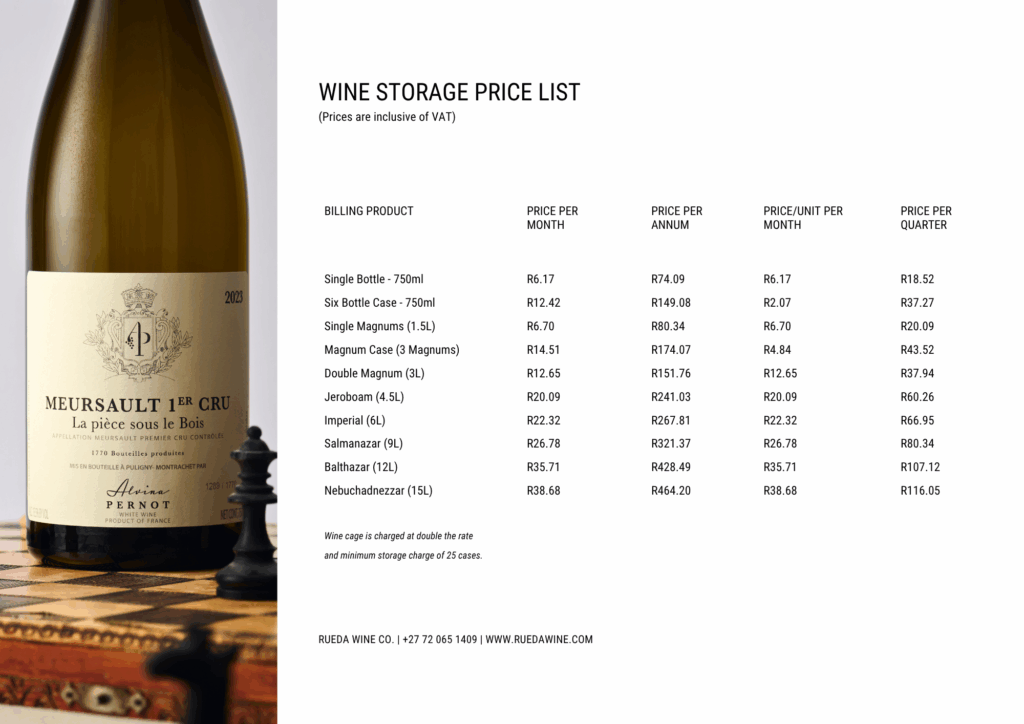Selecting the proper stemware (wine glasses) is an essential aspect of the wine experience. The suitable vessel enhances the wines’ flavour and aroma. As wine enthusiasts, we understand that the nuances between a Universal, Bordeaux, or Burgundy glass can elevate the subtleties of each wine, making your tasting experience more profound. In this exploration, we will delve into the intricacies of stemware. Whether savouring a rich South African Syrah or a delicate French Burgundian Chardonnay, the right glass can elevate your appreciation. Join us as we decode the world of stemware and discover the perfect companion for your next pour.

Enhancing Your Wine Experience
Choosing the proper stemware can enhance your wine experience. Stemware derives its name from the stem you hold below the bowl to avoid your palm warming the liquid. The shape and size of a glass can affect how you perceive the wine’s aroma and flavour. For example, a Bordeaux glass, with its larger bowl, allows for better oxygenation, enhancing the rich, bold flavours of a South African Cabernet Sauvignon.
A Burgundy glass with a broader bowl directs the wine to the tip of the tongue. This highlights the delicate complexities of a French Pinot Noir. The design of the glass also plays a crucial role in maintaining the wine’s temperature. The suitable vessel also aids in the proper aeration of specific varietals. From the glass’s clarity to the rim’s thinness, each element works together to enrich the tasting experience. For the serious collector and wine enthusiast alike, investing in quality stemware is not about aesthetics but about maximising the enjoyment of each sip.
Understanding Wine Terminology
Understanding wine terminology is essential to appreciate the importance of stemware. Terms like “body,” “tannin,” and “terroir” often come up in wine discussions. “Body” refers to the weight and fullness of the wine in your mouth, ranging from light to full-bodied. “Tannin” denotes the astringency and bitterness derived from grape skins, seeds, and oak barrels. Tannins are also responsible for the structure of a wine and its ageing potential. “Terroir” encompasses the environmental factors like soil, climate, and topography influencing the grape’s characteristics. The shape of your glass can accentuate or mellow these elements. For instance, a glass designed for red wine typically has a larger bowl. This softens tannins and highlights the wine’s body. Grasping these nuances can make your tasting experience more enjoyable and educational.
Influence on Wine Tasting
The shape and design of stemware alter the way wines taste. Different glass shapes can focus or diffuse aromas. Mitigating or enhancing aromas affects how you perceive the wine’s bouquet. For example, a narrower, taller glass is ideal for sparkling wines like Champagne. It maintains the wine’s effervescence and directs the bubbles upwards, preserving the aroma.
A broader glass is perfect for red wines. More surface area interacting with the air releases a wine’s complex scents. The rim of the glass also affects the wine’s flow onto your palate. This moderates or enhances your tasting experience. A thin-rimmed glass can provide a smoother, more refined sip than a thick glass. Understanding these nuances can help you select the appropriate stemware for different wines. The correct glass enhances the tasting experience and allows you to appreciate each wine’s intricate flavours and aromas.
Major Classes of Stemware
While it’s possible to find an extraordinary range of glasses, with some manufacturers boasting five, six, or seven pieces for a single varietal, it’s impractical for anyone short of a wine farm, restaurant, or bar to carry so many. Consumers should begin their collections with high-quality Universals and expand to more niche types suited to their favourite varietals. Here are the most common glasses:
White Wine
Sauvignon Blanc glasses have a medium bowl with a tapered but not narrow rim to elevate fruit notes. They’re also great Universal glasses.
Burgundy glasses, which also favour Pinot Noir, are the widest white wine glasses. They optimise temperature regulation and enrich the freshness and flavours stemming from maturation. The very thin rim ensures a narrow flow, providing the smoothest sip.
Good Champagne glasses should be slim with a narrow rim to conserve the effervescence, though, at RWC, we don’t recommend flutes. Compared to the bowl, a slightly widened rim allows for all the elevation of appropriate stemware without the awkwardness of deciding what to do with your nose.
Red Wine
Pinot Noir glasses are often balloon-shaped, and many have a converging rim that straightens at the terminus. This serves two purposes: it lightens acidity while uplifting fruitiness. The wide bowl allows for the development and expansion of aroma.
The Cabernet Sauvignon and Merlot glass is a good choice for a Universalist glass similar to the Sauvignon Blanc. It has a medium bowl and medium-to-thin rim, but its key difference is its height. It concentrates the aroma and slightly prolongs the finish, improving richer and full-bodied wines.
Rosé
The Rosé glass is seldom seen, but its exaggerated hourglass profile enhances the aroma and modulates temperature changes. This channels liquid towards the centre of the tongue. Nearly as translucent as the Chardonnay glass, its very thin rim ensures a smooth, refined sip.
If you’re looking to delve further into stemware, consider perusing the catalogues of top producers. Zalto, Zwiesel, and Riedel are all excellent places to start. Riedel, in particular, boasts at least one glass for every type of grape and sometimes many in each class. They’re all unique, but buying anything more advanced than the Universal piece, unless it’s your favourite varietal, is unnecessary. If you’re interested in some of the best decanters, or some luxury crystal sets, there’s no better choice than Liiton.
At RWC, we have consultants who can assist with purchasing wine glasses and advise on match-ups and best application. Our existing relationships with manufacturers should ensure competitive pricing and access to international catalogues. They’ll guide you through the selection process by examining the wines you drink most often and then compare their craftsmanship, material, design, value, and aesthetic.
Written By: Rueda Wine Co. Staff Writer
Contributing Writer: Rhett Sinnema
Fact Checked By: Rhett Sinnema and Fernando Rueda
Edited By: Fernando Rueda


